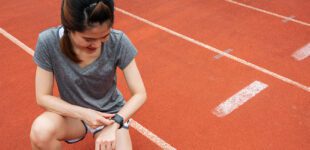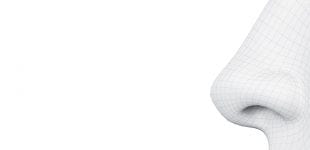April 22, 2021
Wearable health trackers, such as smartwatches, are increasingly becoming mainstream products. Capable of tracking our health data, these devices can help us better understand our own health and fitness.
Multiple IEEE standards were established to define the communication between health tracking wearables and the apps or cell phones that are commonly interoperable, or working together. Without these standards, wearables might not operate as seamlessly between devices as we now expect them to.
As the future of health tracking wearables looks bright than ever before, we asked five Impact Creators to share why a health tracking wearable is worth considering:
1. They Track Our Exercise, Breathing, Heart Rate and More
“Wearables are helping us monitor our exercise, our breathing and our heart rates with the use of sensors embedded in their chips – software algorithms working on the software layer.
There are numerous techniques from which we are able to achieve this monitoring such as photoplethysmography for blood pressure to share breathing and heart rates, accelerometer sensing for movement, etc. More often, some technologies which come under the application of wearables are edge computing, IoT and cloud computing.”
–Ramneek Kalra, IEEE Member
2. We Can Self-Monitor Our Exercise
“Fitness has gained significant mindshare, thanks to the pandemic. At the same time, social-distancing protocols have restricted access to gyms and other similar community sports centers. In these circumstances, wearables are a boon to help keep track of one’s activity.
Monitoring vital signs and changes as one exercises and providing real-time feedback would help one to keep within safe bounds of stress. For people with lifestyle, chronic or other diseases, exercises could be prescribed with greater confidence that reliable feedback mechanisms would help prevent harm.”
–Aiyappan Pillai, Senior IEEE Member
3. They Provide a More Complete View of Our Health
“Activity tracking helps in creating awareness among people the importance of balance in exercise, sleep and eating habits. But the wearables are not only for the healthy people, they are more importantly used for people who have some ailments like heart problems and obesity. Athletes may also get into injuries while training where the wearables can help them to be monitored through workout logs and other self-tracking methods.
The devices with self-tracking features help health-aware individuals monitor their own fitness levels through apps and messages, which the wearer can view without even bothering to take the device out of their pockets. The most important effect of these wearables is that a complete view of one’s health can be obtained all in one place thus reducing time and cost.”
–Ramalatha Marimuthu, IEEE Senior Member
4. Doctors Can Use the Data to Help Diagnose
“Even though the data collected by these wearables are very personal information associated with an individual, data protection and privacy standards prevail. But with proper consent, this data can be shared by an individual with their doctors which in turn are vital information for a patient’s diagnosis.
There was news where someone used a smartwatch, and after some months of data trends, helped the doctors diagnose a serious heart condition and immediately acted on it. It saved someone’s life.”
–Sukanya Mandal, Senior IEEE Member
5. The Technology is Improving
“Today we see wearables’ total addressable market around 33 Billion USD and it is expected to grow beyond 15% year-over-year. The future is promising for wearables, as it bundles the technology to change the social behavior and acceptance of transformative use-cases.
Apart from the forms of wearables that are available today such as smartwatches, smart badges, smart glasses, smart bracelets and smart head-mounted gadgets, I see the emergence of exoskeleton suits for lifting heavy objects and prosthetics through 3D printing for creating human organs will be used in manufacturing and healthcare industries to promote the same.”
–Bala Prasad Peddigari, Senior IEEE Member



 Liquid Infrastructure: Our Planet's Most Precious Resource
Liquid Infrastructure: Our Planet's Most Precious Resource The Impact of Technology in 2025
The Impact of Technology in 2025 Quantum and AI: Safeguards or Threats to Cybersecurity?
Quantum and AI: Safeguards or Threats to Cybersecurity? Why AI Can't Live Without Us
Why AI Can't Live Without Us Bits, Bytes, Buildings and Bridges: Digital-Driven Infrastructure
Bits, Bytes, Buildings and Bridges: Digital-Driven Infrastructure Impact of Technology in 2024
Impact of Technology in 2024 Emerging AI Cybersecurity Challenges and Solutions
Emerging AI Cybersecurity Challenges and Solutions The Skies are Unlimited
The Skies are Unlimited Smart Cities 2030: How Tech is Reshaping Urbanscapes
Smart Cities 2030: How Tech is Reshaping Urbanscapes Impact of Technology 2023
Impact of Technology 2023 Cybersecurity for Life-Changing Innovations
Cybersecurity for Life-Changing Innovations Smarter Wearables Healthier Life
Smarter Wearables Healthier Life Infrastructure In Motion
Infrastructure In Motion The Impact of Tech in 2022 and Beyond
The Impact of Tech in 2022 and Beyond Cybersecurity, Technology and Protecting Our World
Cybersecurity, Technology and Protecting Our World How Technology Helps us Understand Our Health and Wellness
How Technology Helps us Understand Our Health and Wellness The Resilience of Humanity
The Resilience of Humanity Harnessing and Sustaining our Natural Resources
Harnessing and Sustaining our Natural Resources Creating Healthy Spaces Through Technology
Creating Healthy Spaces Through Technology Exceptional Infrastructure Challenges, Technology and Humanity
Exceptional Infrastructure Challenges, Technology and Humanity The Global Impact of IEEE's 802 Standards
The Global Impact of IEEE's 802 Standards Scenes of our Cyber Lives: The Security Threats and Technology Solutions Protecting Us
Scenes of our Cyber Lives: The Security Threats and Technology Solutions Protecting Us How Millennial Parents are Embracing Health and Wellness Technologies for Their Generation Alpha Kids
How Millennial Parents are Embracing Health and Wellness Technologies for Their Generation Alpha Kids Space Exploration, Technology and Our Lives
Space Exploration, Technology and Our Lives Global Innovation and the Environment
Global Innovation and the Environment How Technology, Privacy and Security are Changing Each Other (And Us)
How Technology, Privacy and Security are Changing Each Other (And Us) Find us in booth 31506, LVCC South Hall 3 and experience the Technology Moon Walk
Find us in booth 31506, LVCC South Hall 3 and experience the Technology Moon Walk Virtual and Mixed Reality
Virtual and Mixed Reality How Robots are Improving our Health
How Robots are Improving our Health IEEE Experts and the Robots They are Teaching
IEEE Experts and the Robots They are Teaching See how millennial parents around the world see AI impacting the lives of their tech-infused offspring
See how millennial parents around the world see AI impacting the lives of their tech-infused offspring Take the journey from farm to table and learn how IoT will help us reach the rising demand for food production
Take the journey from farm to table and learn how IoT will help us reach the rising demand for food production Watch technical experts discuss the latest cyber threats
Watch technical experts discuss the latest cyber threats Explore how researchers, teachers, explorers, healthcare and medical professionals use immersive technologies
Explore how researchers, teachers, explorers, healthcare and medical professionals use immersive technologies Follow the timeline to see how Generation AI will be impacted by technology
Follow the timeline to see how Generation AI will be impacted by technology Learn how your IoT data can be used by experiencing a day in a connected life
Learn how your IoT data can be used by experiencing a day in a connected life Listen to technical experts discuss the biggest security threats today
Listen to technical experts discuss the biggest security threats today See how tech has influenced and evolved with the Games
See how tech has influenced and evolved with the Games Enter our virtual home to explore the IoT (Internet of Things) technologies
Enter our virtual home to explore the IoT (Internet of Things) technologies Explore an interactive map showcasing exciting innovations in robotics
Explore an interactive map showcasing exciting innovations in robotics Interactively explore A.I. in recent Hollywood movies
Interactively explore A.I. in recent Hollywood movies Get immersed in technologies that will improve patients' lives
Get immersed in technologies that will improve patients' lives